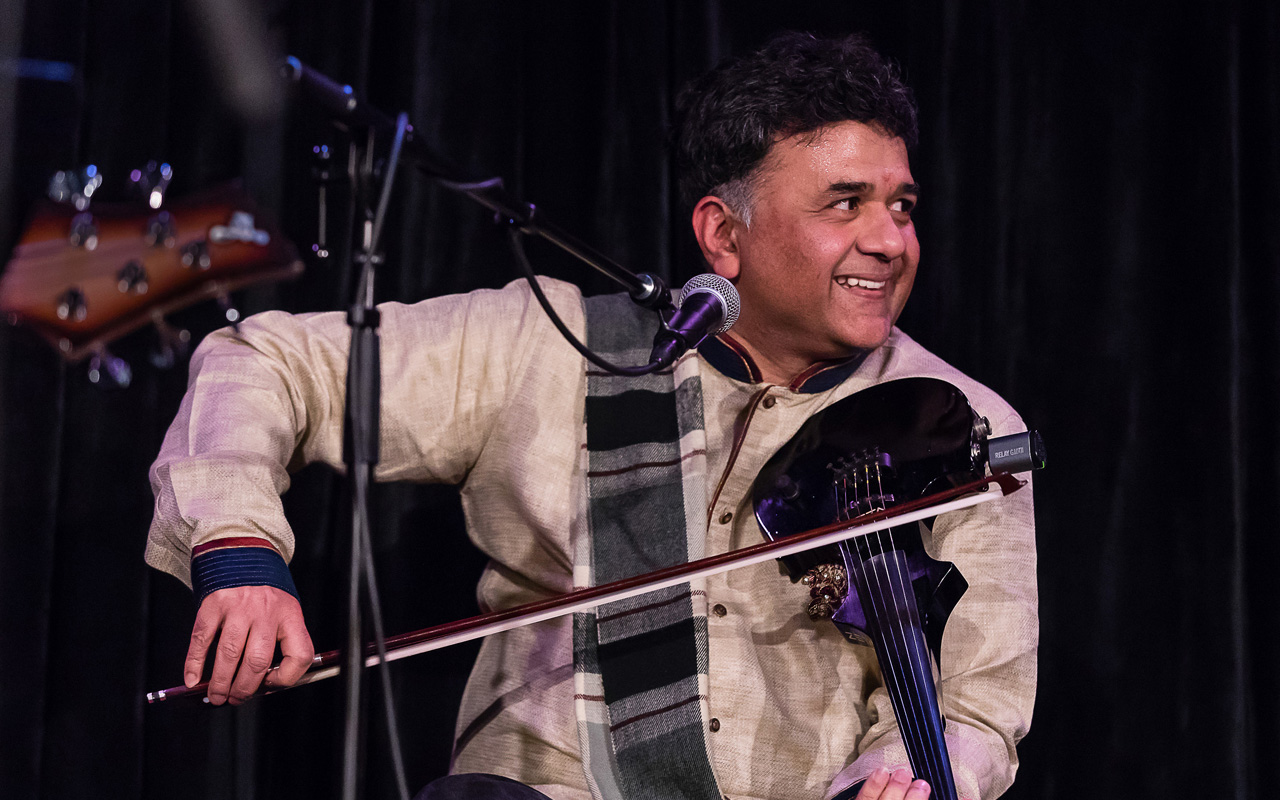
Ganesh Rajagopalan photo by Lisa Hagen Glynn
Saturday, May 18, 4pm
Meydenbauer Center Threatre
11100 NE 6th St, Bellevue
$5-15
Though he makes his home right here in Seattle, South Indian violinist Ganesh Rajagopalan has the world on his mind. Trained from birth in one of the most complex and rigorous classical traditions, a touring virtuoso who’s crisscrossed the globe, he’s remarkably down to earth as a musician and curious about many other kinds of music. On May 18, he’ll be joined by Seattle pianist Marina Albero and her trio (Xavier Lecouturier on drums and Tim Carey on bass), along with Bothell-based kanjira player Sriram Ramesh at the Meydenbauer Center Theatre for a concert exploring the common ground between jazz and South Indian improvisation. This hometown concert comes on the heels of Rajagopalan’s first Grammy win this year for his work with pioneering jazz fusion band, Shakti.
Even before Ganesh Rajagopalan was born, he was exposed to Indian classical music. His father, noted violinist Sri T.S. Rajagopalan, would play to him for 45 minutes every day in his mother’s womb. Birthed in the music, Rajagopalan grew up in Uttar Pradesh in Northern India, where his father was one of the few South Indian violinists available in the region. Because of this, any South Indian artist coming through would ask his father to accompany them on violin, and both Rajagopalan and his brother Kumaresh grew up deep in the tradition. South Indian Carnatic music is distinct from North Indian Hindustani music in form and structure, but also in the different instruments used. Both traditions love vocal music, but Carnatic music favors the violin as an accompaniment to vocalists. Carnatic violinists perform seated and cross-legged, usually with the head of the violin resting on the floor. This unusual manner of playing allows them to move more fluidly up and down the neck of the instrument. Both Ganesh and his brother Kumaresh grew up playing Carnatic violin, and Ganesh had his first full concert (three hours long!) at a mere ten years old. Together, they became a famed duo, two violinists who could trade improvisational lines back and forth at impossible speeds.
Though they still tour together, Rajagopalan’s current fame comes in part from his work with pioneering jazz fusion band Shakti. The original band was known for seminal LPs in the 1970s that melded the jazz guitar of John McLaughlin with Carnatic violinist L. Subramaniam and famed Hindustani tabla player Zakir Hussain, with Carnatic percussionists. Bringing together North and South Indian classical traditions with Western jazz seems an impossible task given the difficulty of each tradition and the virtuosity needed to be a top player, but Shakti pulled it off with ease. For Rajagopalan, he was invited to join when the group reformed in 2020 by Hussain, who he’d played with for years. His initial excitement quickly wore off when he realized he had to learn 50 new compositions from the band’s past half century! Touring the world for Shakti’s 50th anniversary, he saw first-hand how beloved they were and how much they’d influenced others. Shakti wasn’t the first to fuse jazz with Indian classical music, however. From the late 1960s up to today, jazz musicians from Charlie and Alice Parker to Buddy Rich, Yusef Lateef, and Miles Davis have realized that North and South Indian classical music provides a remarkable framework and structure for advanced improvisation.
May 18’s concert with the Marina Albero Trio is a return for Rajagopalan, who was asked by Albero to join her during her 2021 Earshot Jazz residency. Rajagopalan and Albero clearly delight in interweaving composition and improvisation, and in building bridges between traditions. For Rajagopalan, the complexity of Carnatic music versus jazz isn’t the issue. “Each music is complicated in its own way,” he says over Zoom from his Seattle home. “It’s not a one-way street, right?” he asks. “We try to get the best out of each other and try to collaborate and that’s the game!” “When I find something interesting,” he continues, “I throw that ball to Marina and she should find it interesting and then the others in the group. So when we all find something interesting, there’s something in it. When we throw that into the audience, they get a new perspective about how something can sound in a different way.”